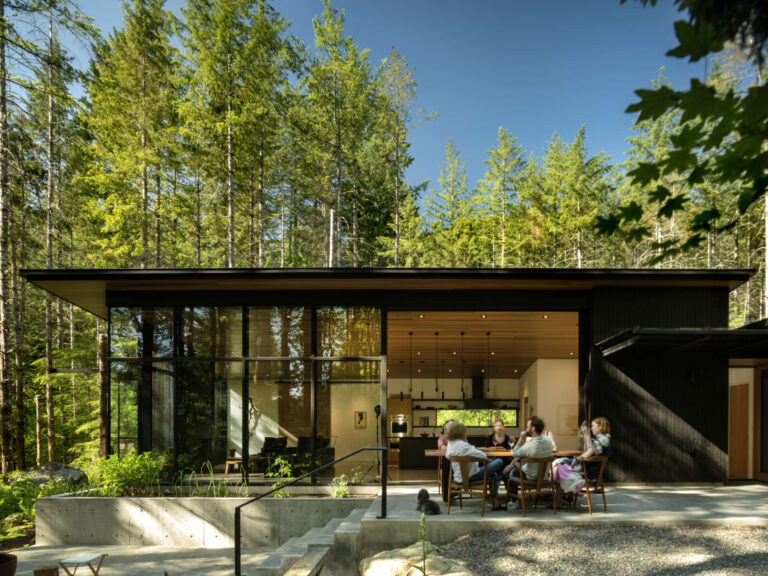How to Build a Backyard Pool? Types and Features
How to Build a Backyard Pool? Types and Features

Designer pools bring status to luxury homes and five-star hospitality spaces. But adding the cooling, calming, energizing, and environmental benefits of a hyper-local water body to a residence can far outweigh the cost of installation. With a range of long- and short-term landscaping options possible, meanwhile, luxury is available, whatever the budget.
Most pools are built below ground to retain unobstructed visuals above. While all in-ground pools start off the same way – with excavation, then connecting the plumbing and filtration systems – the main difference is in the construction of the pool’s basin. The simplest and quickest method is to lower a pre-fabricated reinforced plastic pool or pre-cast concrete basin into the cavity, before connecting the pipework and backfilling the recess with sand. But this is only suitable for off-the-shelf pools with simple geometries. In order to make the most efficient use of all available space, bespoke pool shapes and sizes are best achieved by pouring or spraying concrete into a rebar or timber frame.
Once the pool basin is set, there are various ways to make it watertight. Whatever shape a pool basin’s internal curves and architecture, the surfaces can be plastered and painted for a simple finish. Or, to get creative with patterning and color, they can be covered with waterproof ceramic tiles or mosaics. If the budget or schedule is tight, however, vinyl liners offer an all-in-one waterproof and mold-proof solution, but although quicker to install, the vinyl lining is less durable and typically needs replacing after around ten years.
Related Article

Above-ground, Deep, and Shallow Pools
Avoiding the complications of excavation and retaining walls, above-ground pools can be quicker and easier to install. And while steel-famed reusable pools can move with the seasons, a more permanent above-ground poolscape encased in concrete, stone, or wooden steps and walls provides comfortable access points while making the pool a more natural part of the garden landscape.


If a lack of available space gives little room for actual swimming, meanwhile, both above- or below-ground options can go deeper still with a restful sitting pool instead. Alternatively, moving in the other direction, at a little over ankle deep, shallow pools require little excavation or construction but still create a relaxing space, and the evaporation reduces a home’s surrounding air temperature.

Shaded Pools Offer Escape Both Inside and Out
As cooling as having a swimming pool on the doorstep is, in most areas of the world, they tend to come with a thin operational climatic window. Conditions must be warm enough for users to remain comfortable with wet skin, but without the harsh sunlight and UV rays that keep them hidden in the shade. By installing an intentionally-positioned sun shade, however, a pool’s surface can be warmed during one part of the day, when the pool is not in use, before covering it in shade and keeping it safe to use later on.


When there’s enough available space indoors, or to build a separate poolhouse structure around it, however, heated indoor pools can remain in use all throughout the day and year. A pool set both inside and out, meanwhile, offers the best of both worlds, and by planting suitable species of vegetation alongside the pool’s edge, both indoor and outdoor pools have the atmospheric conditions of a tropical rainforest.

Luxurious Infinity and Waterfall Pools
Home swimming pools, however, especially those in hotter climates, are not always the status symbol they are in cooler countries. High-level luxury infinity pools are created with the simple addition of a weir around one edge of the pool, enabling water to fill all the way to the top with the overflow caught and filtered at the lower level.


Although the weir is useful for collecting water to filter and pump back up to the pool above, the main eye-catching benefit of an infinity pool is its uninterrupted view of the landscape. Often positioned on slopes, infinity pools blend the reflective surface of the water with the sky to create their own horizon. In some cases, meanwhile, the water collecting weir itself can become another swimming pool and, in doing so, the overflowing water forms a cascading waterfall feature.

Pools For Swimmers of All Ages and Abilities
Although in-ground pools keep an area’s unbroken views intact, the lack of obstruction also poses a safety risk for non-swimming pets and children. And while an above-ground pool keeps the water’s edge raised and out of the way, it can be hard to see into the water, making it even less safe. Protective pool covers are kept rolled up alongside the edge or even within the surrounding ground, and solar pool covers can even transfer heat from the sun to warm the water underneath while retaining it until the pool is ready to use.


By building steps, shelves, and slopes into the pool’s basin, the water is made accessible to swimmers and non-swimmers alike. It’s even possible to install a pool with a moving floor, increasing or decreasing the depth, depending on the needs of the user at the time. With additional features like lowering lifts and therapeutic jets, home pools can offer easy-access hydrotherapy for rehabilitation and just for relaxation, while installed counter-current systems enable any pool over three meters in length to be used as a training lap pool.
Find selected projects featuring these pool images in this ArchDaily folder created by the Author.







